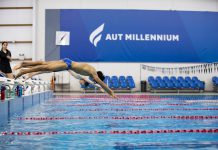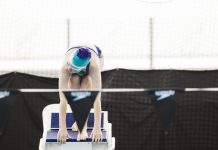When we swim, most of us will feel more natural when we breathe to one side than the other. However, learning to breathe to both sides is an important task to understand as it can have a range of benefits for our freestyle stroke.
Breathing bilaterally means to breathe on both sides, so this can be done by breathing every three, five, or seven strokes and onwards. Another way to effectively breathe bilaterally is to breathe to one side on the way down the pool, and then on your way back to breathe to the other side.
Bilateral breathing is important for both pool swimming as well as open water swimming. Here are a few reasons why:
- Improves technique: When we swim bilaterally, we are able to keep an even stroke and maintain balance in the water more easily. But most of all, it keeps the stroke symmetrical. This in turn, can help to reduce drag in the water.
- Breathing to both sides in open water can offer strategic advantage: When breathing in open water, most tend to breathe just to one side. However, being able to switch sides when required can be an important skill to master as you will be able to eye up your competition as well as maintain a straighter path in the water.
- Breathing to both sides in the pool can offer strategic advantage: Just like in open water swimming, bilateral breathing can give you a chance to eye up someone you’re trying to pace with or your friendly competition in the water.
- In the open water, you need to be able to adjust to the conditions: You may be one to breathe to the left, and then find out on race day, you need to be able to breath to your right in order to get a proper breathe in without swallowing water from waves.
You may think that this is a pointless task to try and master, but gradually implementing bilateral breathing into your swim sessions, whether that be at the pool or in the ocean, will pay dividends. Breathing to your less-preferred side can feel awkward and uncomfortable at first, but it’s worth the effort.
No matter what breathing pattern you choose, the important thing is that you learn to breathe on both sides, so it feels natural and automatic when you swim in the pool as well as in open water.
If there are any technique tips you’d like us to tackle, let us know by emailing [email protected].









































